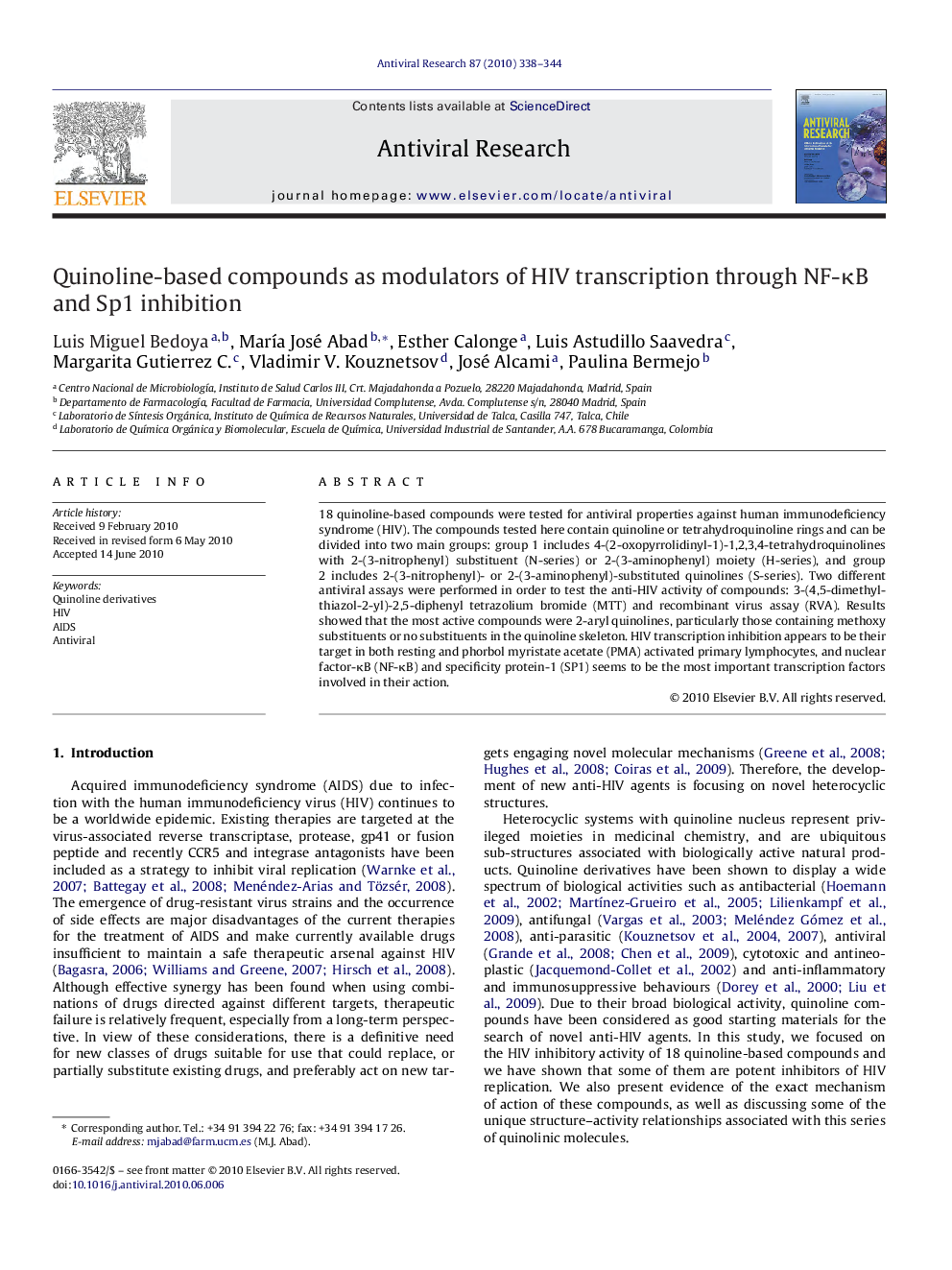| Article ID | Journal | Published Year | Pages | File Type |
|---|---|---|---|---|
| 2510890 | Antiviral Research | 2010 | 7 Pages |
18 quinoline-based compounds were tested for antiviral properties against human immunodeficiency syndrome (HIV). The compounds tested here contain quinoline or tetrahydroquinoline rings and can be divided into two main groups: group 1 includes 4-(2-oxopyrrolidinyl-1)-1,2,3,4-tetrahydroquinolines with 2-(3-nitrophenyl) substituent (N-series) or 2-(3-aminophenyl) moiety (H-series), and group 2 includes 2-(3-nitrophenyl)- or 2-(3-aminophenyl)-substituted quinolines (S-series). Two different antiviral assays were performed in order to test the anti-HIV activity of compounds: 3-(4,5-dimethyl-thiazol-2-yl)-2,5-diphenyl tetrazolium bromide (MTT) and recombinant virus assay (RVA). Results showed that the most active compounds were 2-aryl quinolines, particularly those containing methoxy substituents or no substituents in the quinoline skeleton. HIV transcription inhibition appears to be their target in both resting and phorbol myristate acetate (PMA) activated primary lymphocytes, and nuclear factor-κB (NF-κB) and specificity protein-1 (SP1) seems to be the most important transcription factors involved in their action.
